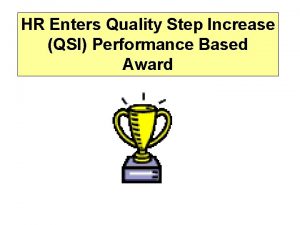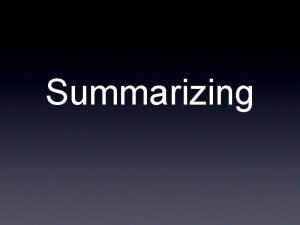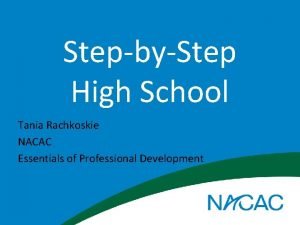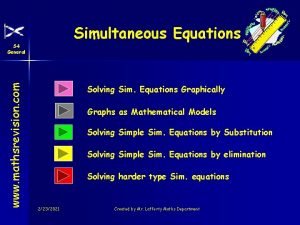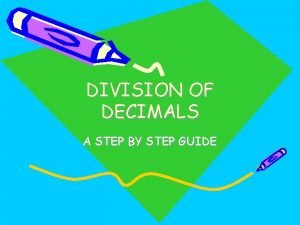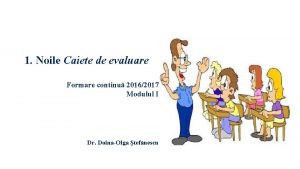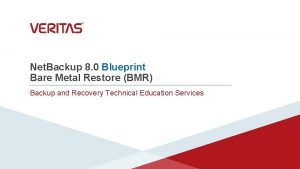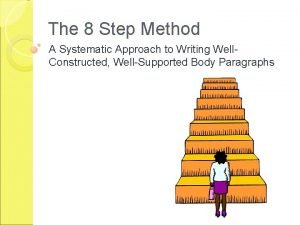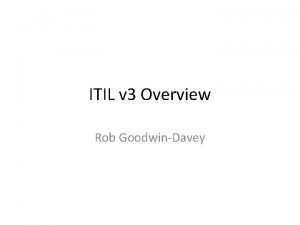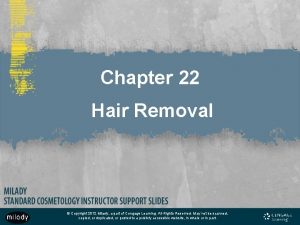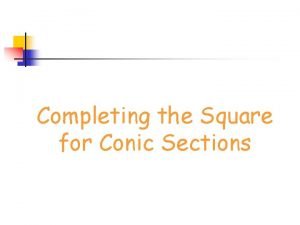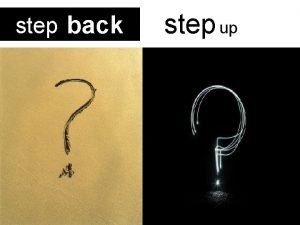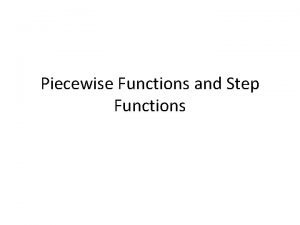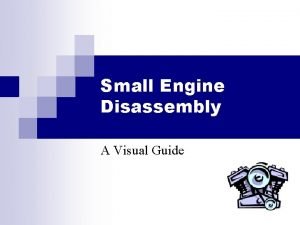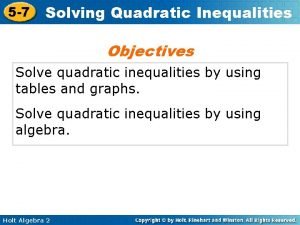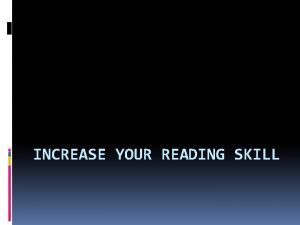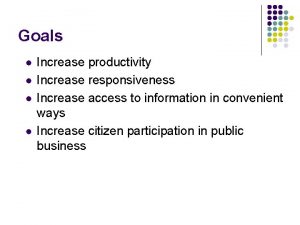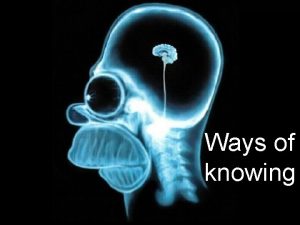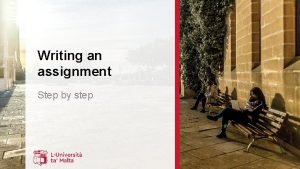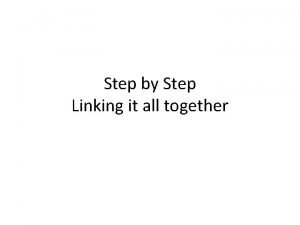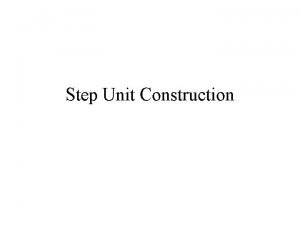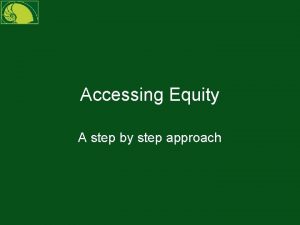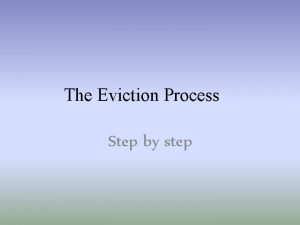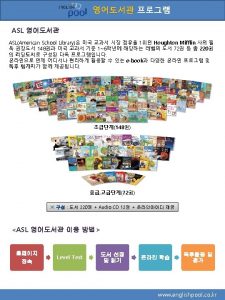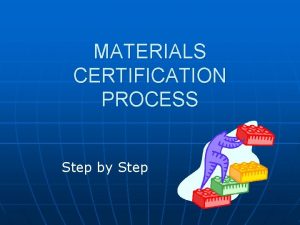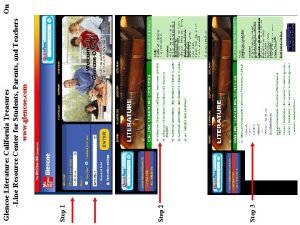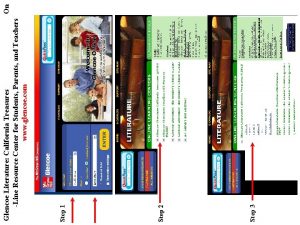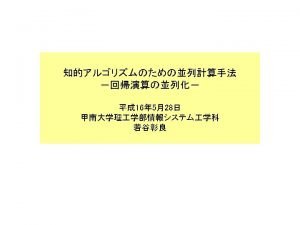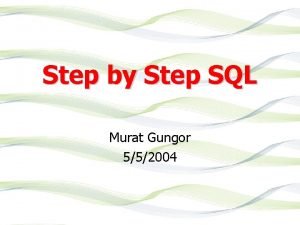Step Up to Reading Ways to increase reading




























- Slides: 28

Step Up to Reading Ways to increase reading ability in your classroom

Steps to Reading • Building the steps • Before reading • During reading • After reading

Building the Steps: a framework for reading California Department of Education, CDE Press, 1430 N Street, Suite 3207, Sacramento, CA 95814.

Building the Steps: it’s a big deal

Building the Steps: be honest survey • Where are your students NOW? – What instruments/methods do you use to assess where your students are in reading? • What are your three biggest issues? • Who can help you?

Building the Steps: be honest • Where are your students NOW? – Assessments: Scantron, DORA, MEAP, DRA etc. – Pay Attention! Observe their reading, jot down notes. • What are three biggest issues? – Short vowels? – Content vocabulary? – Comprehension? • Who can help you? – – Peers Student achievement coaches Professional development Title 1 and 31 A staff

Building the Steps: whole, rich lessons • Start with the standards. What is the goal? • Use each reading lesson as an opportunity to hit as many aspects of reading as you can using planned activities and teachable moments. • When planning your lessons, consider how to scoop up your lows to meet your middles and launch your highs. • Connect your writing lessons to your reading lessons. Reading and writing go together, include social studies and science material when appropriate.

Before reading: word recognition Connect word study to what you are reading in class! • Explicit instruction of Phonics (F. A. S. T. ) • Word sorts: blends, word families, digraphs, long/short vowels, prefixes, suffixes, comparative, superlative, verb inflections, derived forms, compound words • Reinforce sight words: draw, trace, write sentences, find in magazines, make a spelling dictionary, write in special script, flashcards • Make words: word families, digraphs, long/short vowels, prefixes, suffixes, comparative, superlative, verb inflections, derived forms, compound words

Before reading Sort Words Sight Words Make Words

Before reading: predict • Predict which words students won’t decode easily; pull them out, sounds them out – Ex. (shark) s-h makes shhhh…, a-r says ar like a pirate, k says k • Predict which parts of the story will need a think-aloud – Ex. Here the author writes (blah, ) she’s inferring, or she means, (blah, blah). • Predict which words students won’t understand but will see again and again(no more than 3 -5); pull them out, put them on an index card, discuss them. – Ex. Reluctant- means he’s not sure he wants to…

Before reading: prepare Prepare your students to read: • State reading purpose: – Ex. We are reading to learn about bugs. We are reading this story for enjoyment. • Think aloud your pre-reading habits ― Ex. This looks like a fiction story. I have read books by this author before. How many pages is it? • Make the foreign familiar – Ex. what does this remind you of, have you ever experienced this, what do you think it will be about? , let’s look at a picture, etc.

During reading: prepare “Today we’re going to read a book about Egypt! Does anyone know anything about Egypt? ” (Write this down) “Good, let’s find out where Egypt is in the world. ” …








During reading: choral and repeated readings • Choral readings provide built-in support for students who are weak in reading or afraid to read aloud. • Students practice reading fluently. • Students practice and pick up sight words. • Students feel more self-confident. • Students succeed in reading.

During reading: choral and repeated readings • Step 1: Read the text aloud. Have students point to the words as you read them. Monitor students. Pair up highs with lows to assist. • Step 2: Echo. You read. They echo. Break naturally. They still point. – Ex. There was an old lady/ who lived in a shoe • Step 3: All together. They read with you aloud. Pointing. • Step 4: Choral. They take turns with a partner. (can be by sentence or by page) • Step 5: Students read silently by themselves.

During Reading: think aloud • Predicting- I bet they’ll find the treasure. • Explicit questions- Why does Peter need the money? • Implicit questions- What might happen if they don’t find the treasure? • Word meaning- a compass is an instrument for finding directions • Connections- If I found a treasure I’d… • Probe students for specifics -How much is a lot of money?

During independent reading: word recognition help • Ask what makes sense • Ask if there is a part of the word that they know • Suggest putting clues together to make a word • Model and illustrate – Ex. stone s-t makes st, what other words say st? Silent e makes the vowel say it’s own name, what vowel is this?

After reading: WRITE! Students should write for at least 40 minutes a day, 4 days a week (Graves, 1994) • Discuss- prewriting: brainstorming, organizing ideas, paraphrase whole class/small group • Elaborate: story mapping, alternate endings, comparisons, connections, descriptions • Clarify: summarize, reflect, explain, investigate, illustrate • Develop skills: vocabulary building, deciding, creating, inventing,

Brainstorm Illustrate Invent

After reading: WRITE! Traditional and Non-traditional Writing Forms Traditional : autobiographies, poems, mysteries, fables, stories, personal narratives, invitations, book reports, reviews, news stories, folktales, journals, plays, letters, essays, skits, interviews, books, biographies, reports, myths, fairy tales, tall tales, speeches Non-traditional: text messages, emails, blogs, tweets, status updates, bumper stickers, advertisements, jokes, cartoons, obituaries, greeting cards, raps, menus, song lyrics, proverbs, riddles, editorials, recipes, maps, comic strips, posters, job postings, résumés, thank-you notes

Before/During/After reading activities Open the Power. Point Presentation in Slide Show. Roll over the strategy you would like to see. Click it. Download and print. These strategies are provided by Raymond C. Jones from Reading Quest. You should use some of these with content areas. ABC brainstorm carousel clock buddies column notes comparison-contrast CD map graphic organizers history frames inquiry chart K-W-L opinion-proof power thinking problem-solution QARs questioning the author pattern puzzles RAFT papers reciprocal teaching underlining semantic feature analysis story maps summarizing thesis-proof think-pair-share 3 -minute pause 3 -2 -1 venn diagrams word maps

Students can reach the top, but you have to build the steps.
 Step 1 step 2 step 3 step 4
Step 1 step 2 step 3 step 4 Romans 3:10
Romans 3:10 Quality step increase
Quality step increase Reading strategy summarizing
Reading strategy summarizing Pre reading while reading and post reading activities
Pre reading while reading and post reading activities Nacac step by step
Nacac step by step Simultaneous equations step by step
Simultaneous equations step by step Dewey anderson classification
Dewey anderson classification Oci ssh
Oci ssh Buccal pit molar
Buccal pit molar Limerick poem examples
Limerick poem examples How to divide with decimals step by step
How to divide with decimals step by step Caiet de evaluare step by step
Caiet de evaluare step by step Bare metal restore netbackup
Bare metal restore netbackup The 8-step method
The 8-step method Step 1 in 7 step improvement process
Step 1 in 7 step improvement process Process of making apple juice step by step
Process of making apple juice step by step Step one denial step two
Step one denial step two What is the proper technique for waxing the chin milady
What is the proper technique for waxing the chin milady Completing the square ellipse
Completing the square ellipse Step up step back
Step up step back How to balance chemical equations step by step
How to balance chemical equations step by step How to solve piecewise functions step by step
How to solve piecewise functions step by step How to save viva video in gallery
How to save viva video in gallery Trig equations
Trig equations Engine disassembly steps
Engine disassembly steps Wpf step by step
Wpf step by step 6 steps of dishwashing
6 steps of dishwashing Quadratic equation inequality
Quadratic equation inequality


